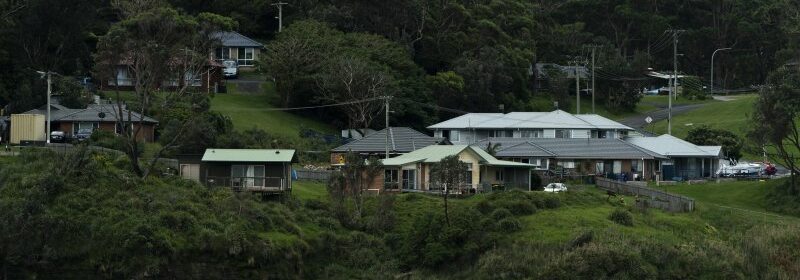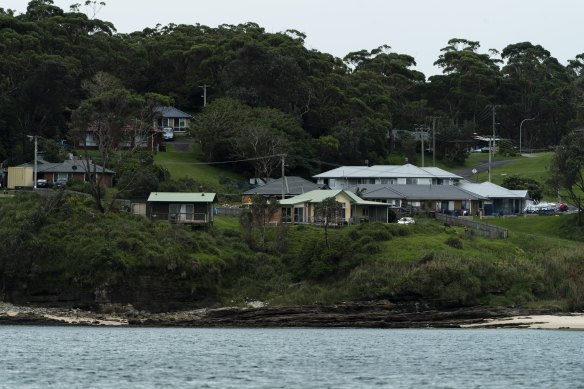Defence pays $22m settlement over cultural loss from poisoned river

Save articles for later
Add articles to your saved list and come back to them any time.
The Department of Defence has agreed to pay $22 million to settle a class action after its base on the NSW South Coast sent a river of poisonous firefighting foam into the heart of an Aboriginal community, devastating their sacred connection to the land.
The historic settlement was reached on Thursday morning, just days before the Wreck Bay Aboriginal Community Council’s lawsuit over cultural loss and property damage – the first of its kind in Australia – was due to go to trial in the Federal Court.
Homes at the Indigenous community of Wreck Bay on the NSW South Coast.Credit: Rhett Wyman
It comes after a two-year investigation by this masthead this week revealed the startling loss of life in the community of 400 people and documented how 3M’s “forever chemicals” have jeopardised their spiritual connection to the land and waters of Wreck Bay, cultivated over thousands of years.
Justice Michael Lee noted that the recent publicity had achieved “great prominence” and it was important people in Wreck Bay understood the case did not have anything to do with the health difficulties they may have suffered.
The case had a “laser-like focus” on harm to their land and cultural practices, he noted.
“It’s not a claim relating to any degree of personal injury,” Lee said.
He stressed that the settlement would not stop community members from pursuing a lawsuit for personal injury if they believed there was a causal link between their illnesses and their exposure to PFAS.
The terms of the proposed settlement will now go before Justice Lee, who must declare it fair and reasonable before it can be approved.
Shine Lawyers is seeking to deduct $5 million in legal costs from the settlement sum. The firm’s barrister told the court that figure was less than its total spend on the case but it was willing to forgo the rest of its fees.
Administration costs and costs of obtaining the settlement approval would also be deducted from the $22 million figure.
The per- and poly-fluoralkyl chemicals in the firefighting foam, better known as PFAS, have contaminated more than 100 sites across the country. Health authorities advise they are expected to be found in the blood of all Australians due to their use in a range of household products.
Last week, the federal government agreed to pay $132.7 million to settle a class action launched by seven other communities also polluted by toxic firefighting foam used on Defence bases.
They included Richmond and Wagga Wagga in NSW, Wodonga in Victoria, Darwin in the Northern Territory, Bullsbrook in Western Australia, Townsville in Queensland and Edinburgh in South Australia.
It followed the first class action to be settled in 2020, which saw $212.5 million paid out to residents of Katherine in the Northern Territory, Williamtown in NSW and Oakey on Queensland’s Darling Downs.
Shine Lawyers, who were representing the people of Wreck Bay, alleged the Commonwealth negligently allowed the toxins to escape from HMAS Creswell and the Jervis Bay Range Facility and leach into the community of Wreck Bay.
After last week’s settlement Prime Minister Anthony Albanese became the first Australian leader to express concerns about the health effects of PFAS.
Only days later the Department of Health describing the chemical’s effect on human health as “minimal”, a position it has strongly held to over the last eight years.
Authorities in Europe and the United States have declared that PFAS chemicals are a human health hazard that at high levels can cause cancer, high cholesterol, immune dysfunction and reproductive effects.
In a landmark decision last year, the United States EPA last year ruled there was no safe level of PFAS in drinking water, based on science showing they could suppress the immune response in children.
“Levels at which negative health effects could occur are much lower than previously understood,” the agency explained.
The Morning Edition newsletter is our guide to the day’s most important and interesting stories, analysis and insights. Sign up here.
Most Viewed in National
From our partners
Source: Read Full Article
